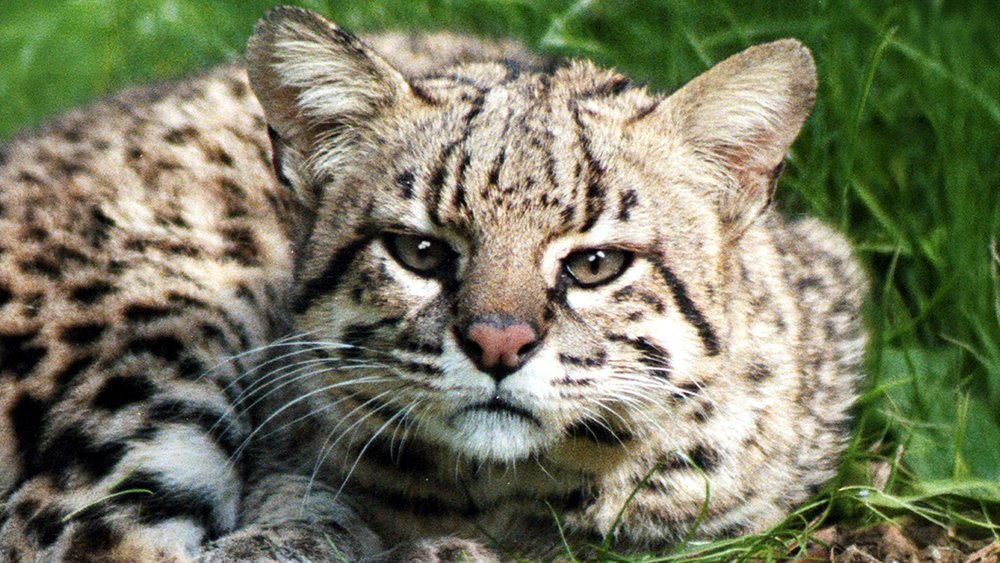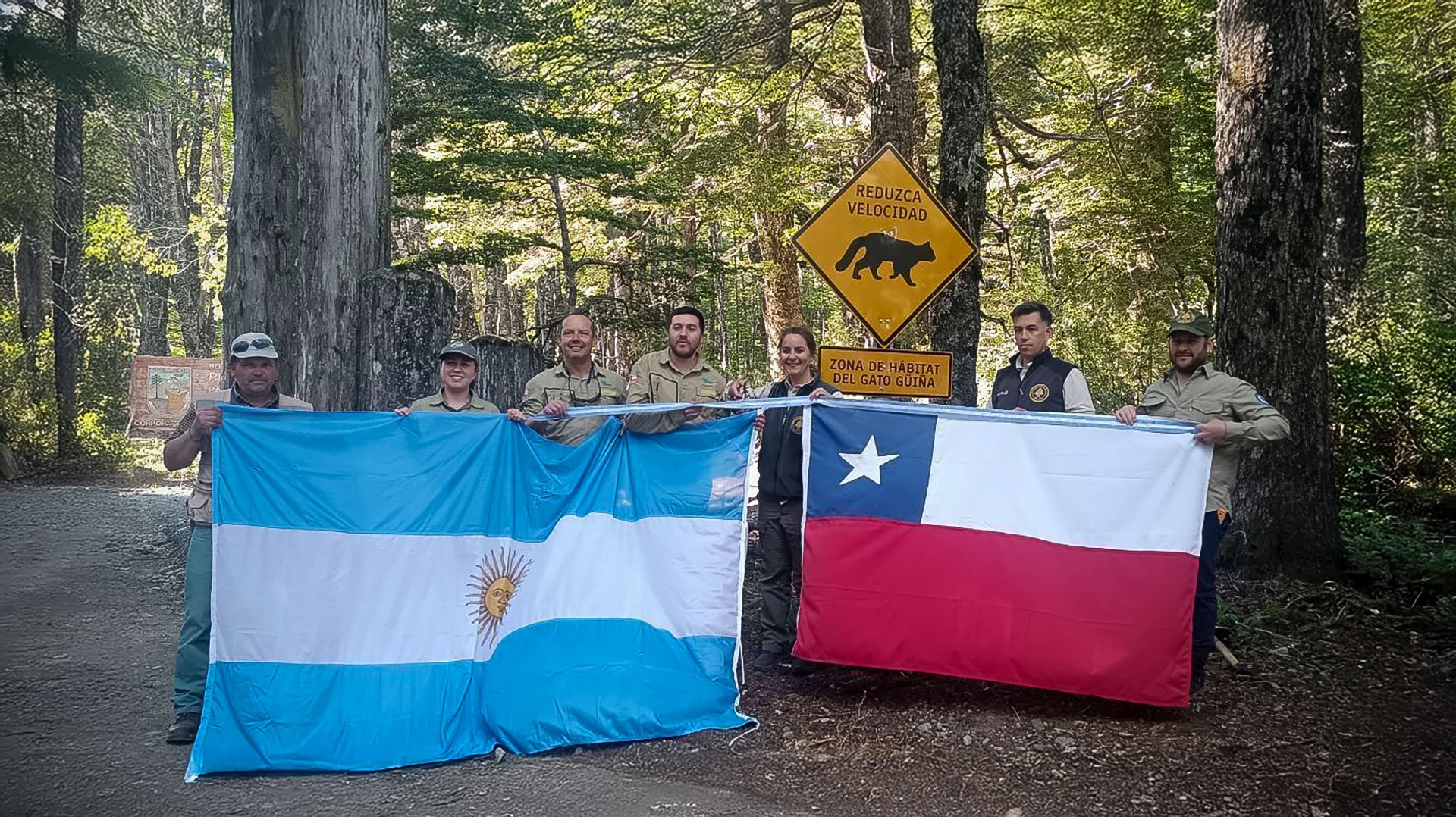Not as sexy, but so important on Give Day 2025 with $21k Matching Funds!
Rescuing a tiger from horrible conditions and giving it a good home is “sexy.” With photos of the awful conditions and video of the cats enjoying their new home, it is very easy for supporters to understand, get emotionally involved, and see specifically what their donations support.
Of the 41 species of wild cats, 5-7 are considered “big” cats, and you know their names and can picture all of them in your minds. Lions, tigers, jaguars, leopards, snow leopards (all Genus Panthera) and sometimes cheetahs and cougars. Some of our “in situ” work is devoted to these species. This work still has an element of “sexy” because you know these charismatic wild cats well. They are often described as “iconic” or “majestic.” Because of this, these species receive the vast majority of attention and funding. That is why, while we do not ignore these species, we allocate more than half of our funding capability to the small wild cats.
If you are reading this, you are someone who cares about wild cats. Even so, understanding, and feeling emotionally, the urgent and necessary work that is required to keep the 34 species of small wild cats from becoming extinct very frankly takes more work on your part. The small cats are not set in our consciousness as majestic or iconic. You may be able to picture a well known species like a bobcat or an ocelot. But can you picture in your mind a pampas cat, a Geoffrey’s cat, a marbled cat, or a flat-headed cat?
OK, we’ll help. Here are a few photos of these adorable little guys:
Pampas Cat
Geoffroy’s Cat
Marbled Cat
Flat Headed Cat
I am reminded of the line in the famous Max Ehrmann poem Desiderata, “they too have their story,” because it applies so importantly to these small cats. In their environments, they play the same role as the big cats. They are the predators that maintain the balance in the ecosystem. If, or when, they disappear, the entire ecosystem deteriorates, destroying many other animal and plant species.
Many of the large nonprofit and other organizations work on the big cats. But who does the work on the small cats? And before addressing that, what is that work?
For example, two of the most significant threats to these small cats are
(1) conflict with native humans they live beside and
(2) the spread of fatal diseases from free roaming domestic dogs and cats.
Some examples of work we fund that reduces or eliminates these threats are:
1) Providing materials for predator proof chicken coops and teaching the local populations the importance of living with the cats rather than killing them to protect their livestock.
2) Providing economic incentives to motivate cat friendly behavior, such as funding alternative sources of income for local residents like bee hives in return for their work preserving the cats.
3) Spaying, neutering, and vaccinating the free roaming domestic dogs and cats to reduce disease transmission to the wild cats and pollution of the gene pool by hybridization.
OK, not as sexy as rescuing a tiger in miserable conditions or even funding tiger pools filled by solar powered wells in tiger habitat that is drying up (which we have done), right? But is it just as important to the planet? Absolutely!
So, who is doing this important work and how can you help us support them? Jim Sanderson, PhD, is the world’s leading expert on small cats. He has spent decades cultivating and supporting individuals around the world who are dedicating their time to these projects. In many cases these individuals receive no support to cover their personal living expenses from funds donated. Instead, they work other jobs to support themselves and devote all their free time to the cats. In all cases they operate with little or no overhead, so the vast majority of funding goes directly to the cats.
Over time, as Jim built this small “army” of dedicated conservationists, he helped them form into Working Groups geographically with Coordinators as leaders. These Coordinators, in addition to running their own projects, help organize the efforts of many volunteer members spread over large geographic areas and bring the members together to share ideas and learn from each other. There are about 15 of these Working Groups. They are usually named after a particular species like the Ocelot Working Group or the Geoffrey’s Cat Working Group. But their work benefits all if the cat species in their geographic area.
You can meet some of these Coordinators at the links below:
In the past, with our budget for in situ contributions limited by the fact that most of our resources were required for operating the sanctuary, with Jim’s guidance we would fund about a dozen or two dozen specific projects each year spread among the working groups. Much of the limited funding available for small cat work is done this way, i.e., conservationists submitting applications to fund a specific project for a year. Sometimes our funding was used to keep going a successful project that would have stopped for lack of funding to continue if we had not stepped in.
With the combination of your donations and earnings from the sanctuary property sale proceeds, and no longer burdened with the costs of operating the entire sanctuary because our cat care costs are limited to the support we provide for the care of our cats at Turpentine Creek, we are entering a new era in our ability to support this important in situ work for small wild cats.
Currently many of these dedicated conservationists in the Working Groups operate year to year without knowing if their successful projects will continue. They spend a huge amount of time writing and submitting proposals for grants to keep the work going. This limits the amount of work they can get done, and there is so much that needs to be done.
We want to help them scale up to do much more of this work. To accomplish this, instead of being one of those funding sources operating project by project, we are in discussions now with two of the working groups about “adopting” the group. We have asked them to present a business plan under which they could dramatically expand the amount of work they do if we provide increased funding that they could count on year after year so
(1) they can focus on the work instead of on fundraising, and
(2) and be assured that no successful project will suddenly have to stop at year end for lack of funding.
For decades we have celebrated the first Tuesday in May as “Give Day” during which we could conduct Facebook lives throughout the day at the sanctuary focusing on the cats. It was our largest fundraising day of the year. Obviously, we cannot do that now. For this Give Day, while the work we do to reduce threats to these small cats is not as “sexy” as some of our past work, we ask you to open your hearts to these small cats struggling against the odds and help us make sure that these successful projects done by incredibly dedicated but very poorly funded individuals continue and expand by giving what you can at the link below or by sending checks to Big Cat Rescue, 17342 Gunn Hwy, Odessa, FL 33556. On their behalf, thank you so much!
PLEASE HELP US MAKE SURE TO EARN THE FULL $21,000 IN MATCHING FUNDS
NO DONATION IS TOO SMALL, THEY ALL HELP!













